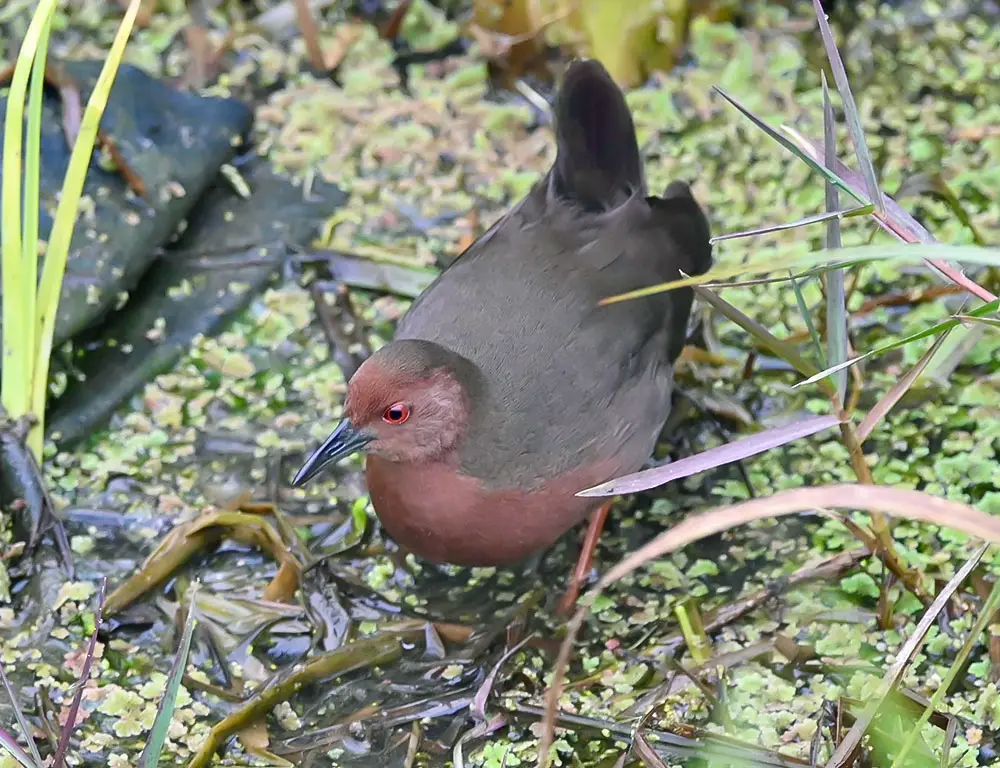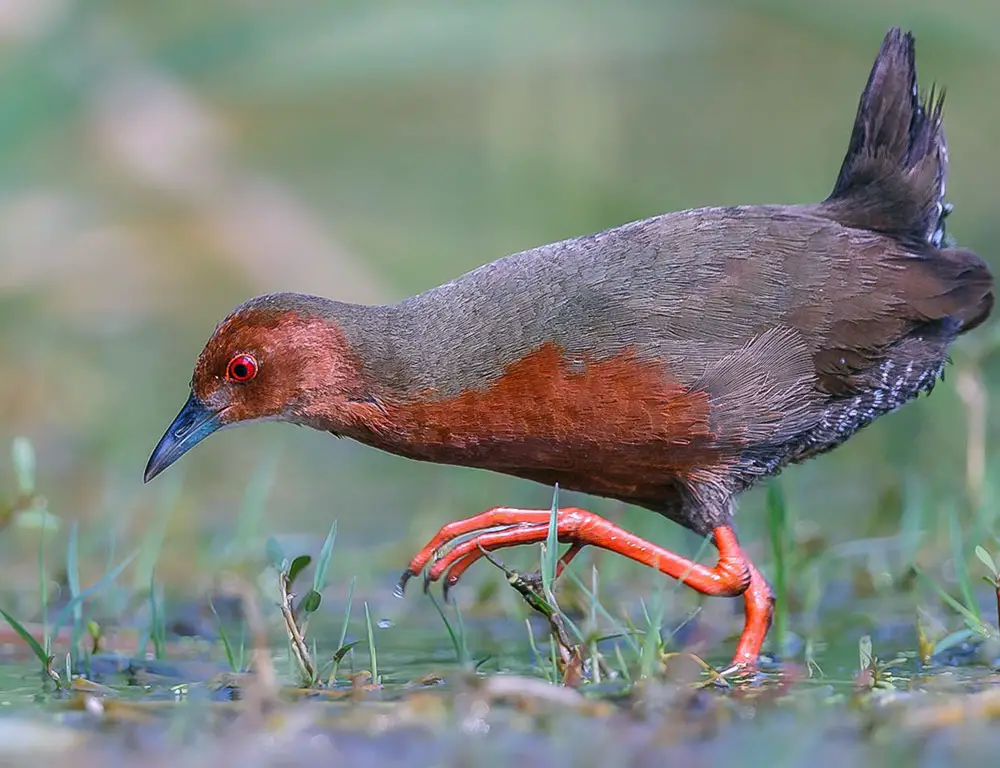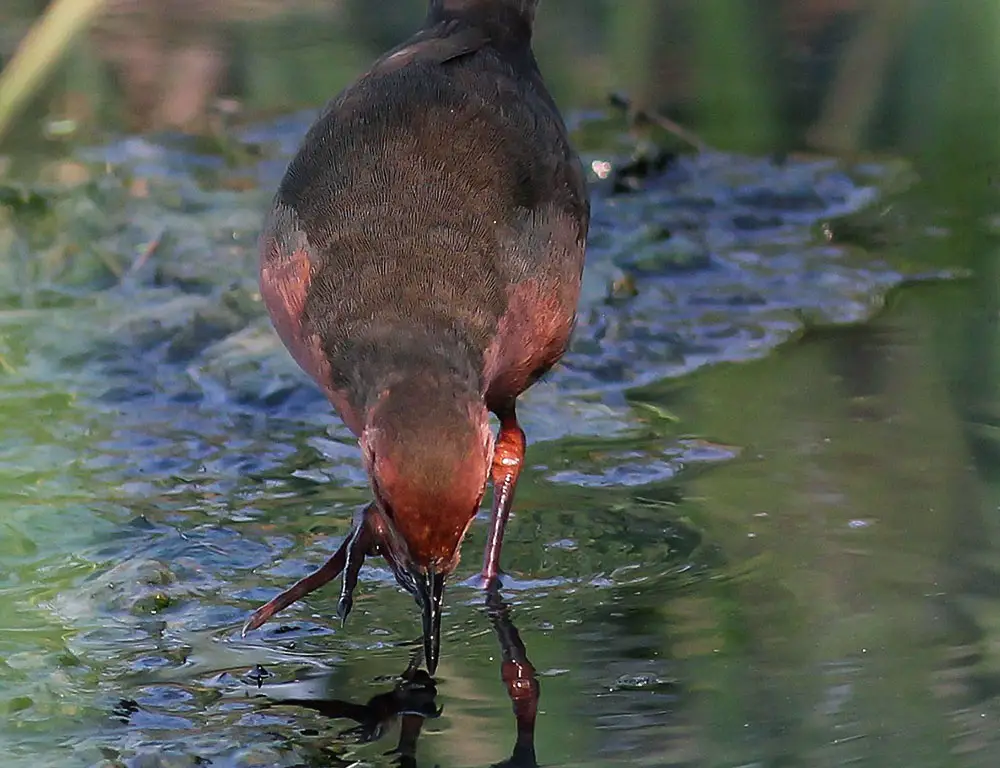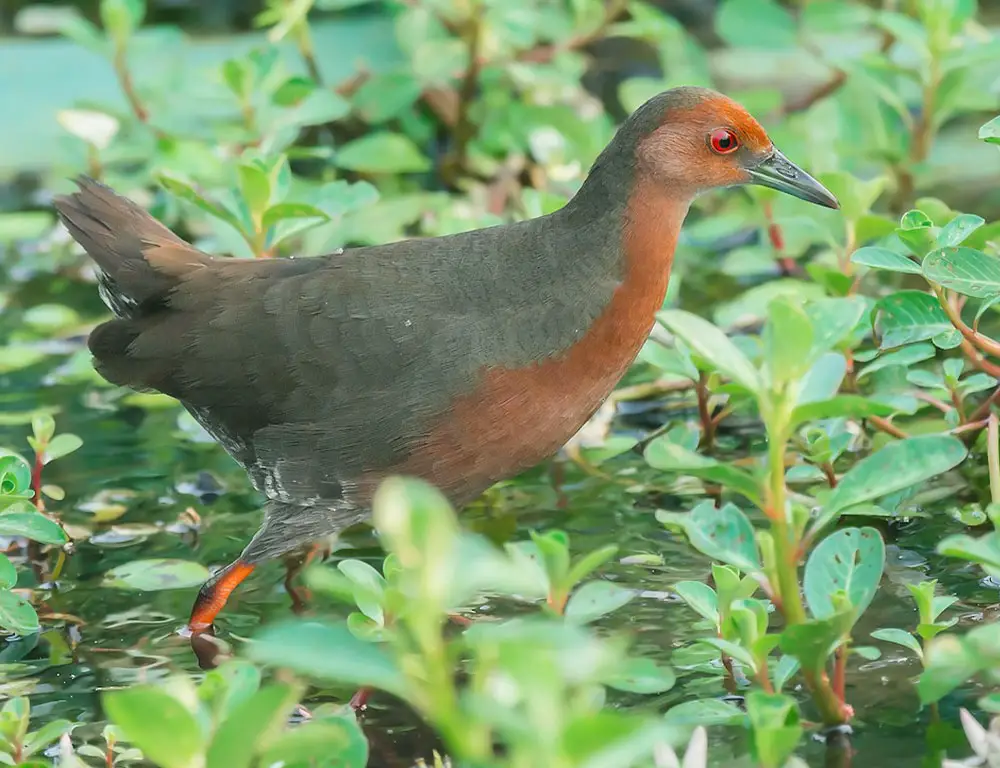I’ve always been intrigued by the diverse world of birds, and one species that’s caught my attention is the Ruddy-Breasted Crake.
It’s a small waterbird of the family Rallidae that can be found across East Asia and Southeast Asia, extending to Papua New Guinea and Indonesia.
This bird is characterized by its distinctive rufous (or ruddy) underparts, a feature that gives it its name.
The Ruddy-Breasted Crake isn’t just fascinating for its unique appearance; it also has intriguing behaviors. They’re known as secretive birds, often hiding in dense vegetation near water bodies. Their elusive nature adds an element of mystery to these creatures, making them even more attractive to study.
Despite being widely distributed across several regions, there’s still so much we don’t know about the Ruddy-Breasted Crake. I’m excited to share my knowledge on this subject – from their habitat preferences to their breeding habits and everything in between!
So, let’s dive deep into understanding this bird species together.
Physical Characteristics of the Ruddy-Breasted Crake

The Ruddy-Breasted Crake (Porzana fusca) possesses several notable physical characteristics that contribute to its unique appearance and adaptive abilities:
Size
Adults typically measure 19-23 cm in length, making them relatively small but robust birds.
Coloration
The upper parts of the bird are characterized by olive-brown feathers, which contrast prominently with the ruddy chest and belly. This distinctive coloration aids in easy identification among other marshland birds.
Beak
The Ruddy-Breasted Crake features a short, greenish-yellow bill ideally suited for pecking small insects off plants or the ground. This specialized beak shape and coloration facilitate efficient foraging within their habitat.
Legs
Possessing strong and well-built legs, these birds navigate through wetlands with ease. Their legs are a pale grey color, blending in with their environment while providing the necessary support for their movements.
Undertail Feathers
During flight or when raising their tail while walking on land or wading in water, the barred black-and-white undertail feathers become visible. This feature adds to their camouflage and may aid communication or signaling.
Eyes
The Ruddy-Breasted Crake’s eyes are strikingly red, standing out against the brown and white plumage. These vibrant eyes add to their aesthetic appeal and enhance visibility in the often murky habitats they inhabit.
Habitat and Distribution of the Ruddy-Breasted Crake

The Ruddy-Breasted Crake (Porzana fusca) is a bird species known for its captivating presence in wetland habitats.
Here’s a closer look at its preferred habitats and distribution range:
Habitat Preference
Ruddy-breasted crakes are primarily found in the lush landscapes of Southeast Asia. They inhabit various wetland habitats such as marshes, rice fields, reed beds, damp forests, and grasslands.
These environments provide abundant food sources like insects, small fish, and seeds, essential for survival.
Global Distribution
The Ruddy-Breasted Crake’s distribution range spans a vast area from India to Indonesia and up to China. They are also found in the Pacific Islands and Australia.
This wide geographical spread showcases their adaptability to different environments within Eastern Asia and beyond.
Seasonal Variation
While Ruddy-Breasted Crakes are present year-round in Eastern Asia, their distribution patterns exhibit seasonality and migratory behavior elsewhere. For example, during the breeding season between April and September, sightings peak in Japan.
Australia’s sightings increase from November to January as they migrate southwards.
Migration Patterns
The migratory behavior of Ruddy-Breasted Crakes adds another layer of complexity to their distribution. They follow seasonal patterns, moving to areas with more favorable conditions for breeding or foraging during specific times of the year.
Here are some numbers that give a clearer picture:
| Country | Sighting Peak |
|---|---|
| Japan | April-September |
| Australia | November-January |
Behavior and Diet of the Ruddy-Breasted Crake

The behavior and diet of the Ruddy-Breasted Crake (Porzana fusca) are fascinating aspects of this bird’s life:
Crepuscular Behavior
Ruddy-breasted crakes are known for their crepuscular activity patterns, which are most active during dawn and dusk. During these times, they can be observed skulking around marshy areas or rice fields in search of food.
Their preference for crepuscular activity likely helps them avoid potential predators while maximizing foraging opportunities.
Versatile Diet
These crakes have a versatile diet, primarily consisting of insects such as beetles and ants. However, they are not limited to insects; they also consume worms, mollusks, and even small fish when available.
Vegetation, including seeds from various plants such as grasses, also forms a significant part of their diet, especially during seasons when insects may be scarce.
Aggressive Behavior
Despite their small size, Ruddy-Breasted Crakes can be surprisingly aggressive when defending their territories or protecting their young from potential threats.
This aggression underscores their determination to safeguard their nesting sites and ensure the survival of their offspring.
Conservation Status of the Ruddy-Breasted Crake

The conservation status of the Ruddy-Breasted Crake (Porzana fusca) is currently classified as “Least Concern” by the International Union for Conservation of Nature (IUCN).
While this classification may initially seem reassuring, it’s essential to understand what “Least Concern” signifies in conservation terms.
Definition of “Least Concern”
The designation of “Least Concern” indicates that the species faces no immediate threat to its survival. However, it does not imply that the species is abundant or thriving.
Instead, it suggests that the population is stable, and there are currently no significant declines or imminent risks to its existence.
Potential Threats
Despite its current status, the Ruddy-Breasted Crake, like many other bird species, faces various threats that could impact its population in the future:
- Habitat Destruction: Loss of wetland habitats due to human activities such as urbanization, agriculture, and drainage poses a significant threat to the species.
- Climate Change: Shifting weather patterns and rising temperatures can alter the availability of suitable habitats and food sources for the crakes, potentially leading to population declines.
- Pollution: Water and soil contamination, resulting from human activities such as industrial pollution and agricultural runoff, can adversely affect the health of wetland ecosystems and the birds that depend on them.
Population Trend and Distribution Range
The Ruddy-Breasted Crake currently exhibits a stable population trend, and it has a wide distribution range spanning approximately 33,700,000 square kilometers.
However, it’s crucial to recognize that a stable population does not guarantee long-term security, especially amid ongoing environmental changes and human impacts.
Conclusion
Diving into the world of the Ruddy-Breasted Crake, I’ve discovered so much about this fascinating species. It’s a bird that often goes unnoticed due to its secretive nature and preference for dense cover. Yet, it holds a significant value within its ecosystem.
Reflecting on my exploration of the Ruddy-Breasted Crake’s behaviors and characteristics, it’s clear that this bird is truly an unsung biodiversity hero.
Their distinctive red chest and striking black-and-white flanks add a splash of color to their habitats in Asia and Australia.
However, like many other wildlife species around the globe, these birds face threats from habitat loss. An important point I’d like you to remember is our collective responsibility towards preserving such natural wonders.
We can all contribute by promoting sustainable practices, participating in conservation efforts, or spreading awareness about these beautiful creatures.
Now let me share some key takeaways:
- The Ruddy-Breasted Crake is not just another bird; it’s a unique species with attractive behavioral traits.
- Their secretive nature makes studying difficult but adds to their allure.
- Conservation efforts are needed as they face threats from habitat destruction.
In wrapping up this journey through the life of the Ruddy-Breasted Crake, I hope you’ve found it as captivating as I have. These tiny creatures remind us that every part of our ecosystem has a role – no matter how big or small – contributing towards biodiversity’s rich tapestry.
Let’s vow to appreciate these lesser-known wonders more often because understanding them better could be vital to preserving our planet’s biodiversity for future generations!